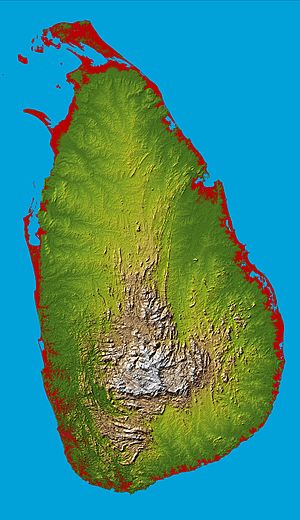There are about 20.87 million people in Sri Lanka, which is about 319.6 people per square mile. The land is mainly flatland. There are mountains and river canyons on south central part, and beaches along the coasts. It has tropical climates with average temperature of 86°F to 91°F.
Sri Lanka is a multi-religious country. Buddhists comprise 70 percent of the population. Hinduism is the second most prevalent religion in Sri Lanka and predates Buddhism. Today, Hinduism is dominant in Northern, Eastern and Central Sri Lanka. Islam is the third most dominant religion in the country, having first been brought to the island by Arab traders over the course of many centuries. Christianity was the last religion to reach Sri Lanka.
Sinhalese and Tamil are the two official languages of Sri Lanka. The Constitution defines English as the link language. English is widely used for education, scientific and commercial purposes. Members of the Burgher community speak variant forms of Portuguese Creole and Dutch with varying proficiency, while members of the Malay community speak a form of Creole Malay that is unique to the island.
Common food includes rice and curry, pittu, kiribath, wholemeal roti, string hoppers, wattalapam (a rich pudding of Malay origin made of coconut milk, jaggery, cashew nuts, eggs, and spices including cinnamon and nutmeg), kottu, and hoppers. Jackfruit may sometimes replace rice. Traditionally food is served on a plantain leaf or lotus leaf.
In April, Sri Lankans celebrate the Buddhist and Hindu new year festival. Esala Perahera is a symbolic Buddhist festival consisting of dances and decorated elephants held in Kandy in July and August.

Leave a Reply